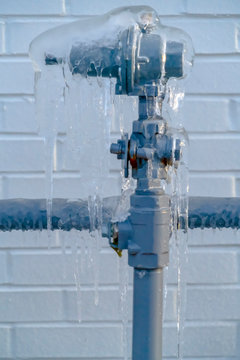Are you currently on the lookout for selective information around Winter Plumbing Precautions: Preventing Frozen Pipes?

Winter can damage your pipes, specifically by freezing pipes. Here's how to stop it from happening and what to do if it does.
Intro
As temperatures decrease, the threat of frozen pipes increases, possibly leading to costly repairs and water damage. Recognizing exactly how to avoid icy pipes is critical for homeowners in chilly climates.
Avoidance Tips
Protecting vulnerable pipelines
Cover pipelines in insulation sleeves or utilize warm tape to safeguard them from freezing temperature levels. Focus on pipes in unheated or exterior locations of the home.
Home heating strategies
Maintain indoor rooms adequately heated up, especially areas with plumbing. Open cabinet doors to permit warm air to flow around pipes under sinks.
Just how to identify icy pipes
Try to find reduced water flow from taps, unusual smells or noises from pipelines, and noticeable frost on exposed pipes.
Long-Term Solutions
Structural changes
Consider rerouting pipes away from outside wall surfaces or unheated locations. Include extra insulation to attic rooms, basements, and crawl spaces.
Updating insulation
Invest in premium insulation for pipelines, attic rooms, and walls. Proper insulation assists maintain constant temperatures and reduces the threat of icy pipelines.
Safeguarding Exterior Plumbing
Yard hose pipes and outside faucets
Disconnect and drain yard hose pipes before winter. Set up frost-proof spigots or cover exterior faucets with insulated caps.
Recognizing Frozen Pipes
What creates pipelines to ice up?
Pipelines freeze when revealed to temperature levels below 32 ° F (0 ° C) for expanded periods. As water inside the pipes freezes, it broadens, taxing the pipe walls and possibly triggering them to rupture.
Threats and problems
Frozen pipes can result in supply of water disturbances, property damages, and expensive repair services. Ruptured pipes can flooding homes and cause comprehensive architectural damage.
Indications of Frozen Water Lines
Determining icy pipelines early can stop them from rupturing.
What to Do If Your Pipelines Freeze
Immediate actions to take
If you presume frozen pipes, maintain faucets available to eliminate pressure as the ice melts. Utilize a hairdryer or towels taken in warm water to thaw pipelines slowly.
Final thought
Avoiding icy pipelines calls for proactive steps and fast responses. By understanding the reasons, signs, and preventive measures, house owners can safeguard their pipes during winter.
5 Ways to Prevent Frozen Pipes
Drain Outdoor Faucets and Disconnect Hoses
First, close the shut-off valve that controls the flow of water in the pipe to your outdoor faucet. Then, head outside to disconnect and drain your hose and open the outdoor faucet to allow the water to completely drain out of the line. Turn off the faucet when done. Finally, head back to the shut-off valve and drain the remaining water inside the pipe into a bucket or container. Additionally, if you have a home irrigation system, you should consider hiring an expert to clear the system of water each year.
Insulate Pipes
One of the best and most cost-effective methods for preventing frozen water pipes is to wrap your pipes with insulation. This is especially important for areas in your home that aren’t exposed to heat, such as an attic. We suggest using foam sleeves, which can typically be found at your local hardware store.
Keep Heat Running at 65
Your pipes are located inside your walls, and the temperature there is much colder than the rest of the house. To prevent your pipes from freezing, The Insurance Information Institute suggests that you keep your home heated to at least 65 degrees, even when traveling. You may want to invest in smart devices that can keep an eye on the temperature in your home while you’re away.
Leave Water Dripping
Moving water — even a small trickle — can prevent ice from forming inside your pipes. When freezing temps are imminent, start a drip of water from all faucets that serve exposed pipes. Leaving a few faucets running will also help relieve pressure inside the pipes and help prevent a rupture if the water inside freezes.
Open Cupboard Doors
Warm your kitchen and bathroom pipes by opening cupboards and vanities. You should also leave your interior doors ajar to help warm air circulate evenly throughout your home.
.jpg)
I found that blog posting on Prevent Frozen Pipes when doing a search on the internet. Liked our posting? Please share it. Let someone else find it. Thank you so much for going through it.
Browse Our Site
 Joshua Jackson Then & Now!
Joshua Jackson Then & Now! Shane West Then & Now!
Shane West Then & Now! Lucy Lawless Then & Now!
Lucy Lawless Then & Now! Dawn Wells Then & Now!
Dawn Wells Then & Now! Lacey Chabert Then & Now!
Lacey Chabert Then & Now!